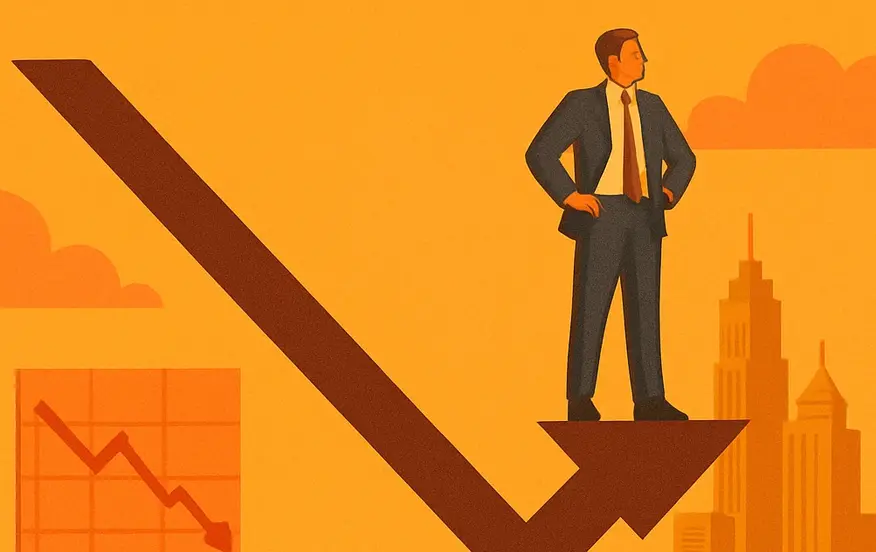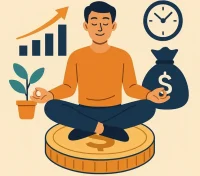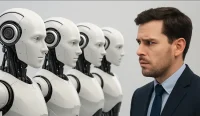The K-Shaped Reality: Two Americas, One Economy
America’s economic recovery has created a tale of two economies. While the wealthy are experiencing unprecedented prosperity, ordinary Americans are facing stagnant wages, job losses, and a declining standard of living. This K-shaped economy, where different income groups move in opposite directions, is reshaping the American dream and creating deep economic divisions that threaten the nation’s social fabric.
Economic Growth: Slowing Down and Concentrating Up
We’ve had economic growth for a number of years, and it is continuing, but there are two critical things happening with economic growth that people should be aware of. The first is that growth is generally slowing, going from 2.5% in 2024 down to just about under 2% in total. But what’s really interesting is how AI is becoming a significant part of economic growth.
AI, which was only about 10% of economic growth in previous periods, now represents 31% of economic growth. This means the actual growth that’s filtering down to ordinary Americans is dropping even more dramatically, to just 1.1% in the first half of 2025. The AI boom is creating wealth, but it’s not reaching the average American worker.
The Wage Divide: Rising Income Inequality Returns
For the first time in a number of years, people toward the bottom are doing worse than people toward the top. You had a whole period going back to 2016 where wages for people at the bottom quartile were rising faster than for the rest of the other quartiles further up. After COVID, that trend has reversed.
Now, people in the bottom quartile are seeing their wages only going up by about 3.5% a year, while people at the top are seeing them grow by more than 5.5% a year. We’re seeing rising income inequality for the first time in a number of years, reversing the progress made in recent decades.
The Stock Market Wealth Effect: The Rich Get Richer
We’ve had this extraordinary period in the stock market where you’ve had the market go up by 15% or more in five out of the last six years, with increases as much as 30% and 25%. These huge increases are way above what the average American is going to get, and this year, while not quite over yet, we’re also on track for another year where the stock market is likely to go up by 15% again.
This has created an enormous amount of wealth and helped fuel a huge rise in purchasing power on the part of the very wealthy. If you go back to the beginning of 2020, the people in the top 20% have increased their consumption by 50%, but every other income group has only gone up about 25%, which is almost exactly the same as inflation.
The Consumption Divide: 10% Own Half the Market
What does this mean? It means that for the average American, they’re really not buying any more stuff than they were buying four years ago, which means their standard of living isn’t really going up. The top 10% of Americans account for 50% of everything that’s bought in this country today. Think about that: the top 10% of Americans get 50% of the consumption, while the bottom 90% of Americans get the other 50% of consumption.
This concentration of purchasing power among the wealthy is creating a fundamentally different economy where most Americans are being left behind, unable to participate in the prosperity that the stock market and AI boom are creating.
The Job Market Crisis: Small Business Under Siege
The job market is clearly getting rough, and that is unusual when you have an economy that’s still expanding. We have a number of things going on: tariffs, economic uncertainty, and AI. All those things together have led to a significant slowdown in the jobs market. We even had one month where jobs may have declined, with ADP, the private forecaster, saying we lost jobs last month.
For the last four months, virtually all the job creation has come from big companies. The smaller companies, all the way down to the very smallest businesses with 1 to 19 employees, have actually been losing jobs for four months. Small business has really been hurting, which is particularly concerning because small businesses are often the engine of job creation and economic mobility.
Small Business: The Hidden Casualty of the Job Market Crisis
With big corporations driving nearly all job creation, America’s true growth engine — small business — is struggling to survive. Tariffs, AI disruption, and financial uncertainty are tightening margins and forcing layoffs. Yet within this turbulence lies opportunity for innovators, advisors, and entrepreneurs who can help rebuild resilience from the ground up.
Explore Small Business & Entrepreneurship Roles →Job Creation: Only in Low-Wage Sectors
What kinds of jobs have we been creating? We’ve been creating jobs in leisure and hospitality, which means restaurants and hotels. We’ve been creating jobs in education and health, as we’re obviously a nation putting more and more into health. But everything else, we’ve basically been losing jobs.
Whether it’s finance or even information technology (notwithstanding AI) or the professions like law or business, we’re losing jobs at the moment and we’re only creating jobs in these lower-wage sectors. This means that the jobs being created are not the high-paying, skilled positions that can support a middle-class lifestyle.
Long-Term Unemployment: A Growing Crisis
More and more Americans are being unemployed for longer and longer periods. We define long-term unemployment as being unemployed for 27 weeks or more, and that percentage is now up to just over a quarter of all the unemployed. Put aside COVID, that is the highest percentage since 2016, and it is rising.
You have more and more people in the long-term unemployed ranks, which makes it increasingly difficult for them to re-enter the workforce and rebuild their economic security. This long-term unemployment crisis is creating a permanent underclass of workers who may never fully recover economically.
The Stock Market Bubble: How Big and How Painful?
Stocks are very, very expensive. They’re as expensive as they’ve almost ever been when you look at it relative to earnings. A lot of what’s been driving the stock market has been what we call the Magnificent Seven, the big technology companies that are involved in the AI boom, but other stocks are up as well.
Predicting the stock market is honestly a fool’s game, and I don’t try to do it. I personally would be very surprised if we had a crash along the lines of 1929, but it’s certainly possible that the stock market will correct somewhere. It’s had that extraordinary run, and all good things do come to an end. We could have a significant downturn in the stock market, which would further exacerbate the economic divide.
The AI Factor: Job Displacement and Economic Concentration
AI is becoming a significant part of economic growth, but it’s also displacing jobs and concentrating wealth. The AI boom is creating enormous value, but that value is not being shared with the workers whose jobs are being automated or displaced. This technological disruption is accelerating the K-shaped economy, where those who own or control AI technology benefit enormously while those whose jobs are replaced by AI struggle to find new opportunities.
The concentration of AI benefits among a small group of companies and individuals is creating a new form of economic inequality that may be even more persistent than traditional wealth gaps.
AI Is Rewriting the Rules of Work — Don’t Get Left Behind
The AI boom is creating trillion-dollar winners — but only for those who adapt fast. As automation reshapes industries, new roles are emerging in AI operations, model training, data ethics, and human-AI collaboration. The question isn’t whether AI will replace jobs — it’s whether you’ll learn to work with it or be replaced by it.
Discover AI & Automation Career Opportunities →The Bottom Line: A Divided Nation
When you look at these polls, you still find a huge percentage of Americans who think the economy is getting worse, not better, who think that we’re on the wrong track, not the right track. Because when you look at the average, ordinary, everyday Americans, they are simply not getting better off at the moment.
The K-shaped economy is creating two separate Americas: one where the wealthy are experiencing unprecedented prosperity, and another where ordinary Americans are struggling with stagnant wages, job losses, and declining purchasing power. This economic divide threatens not just individual prosperity but the social cohesion of the nation.
FAQ Section
Q: What is a K-shaped economy?
A: A K-shaped economy occurs when different income groups move in opposite directions during economic recovery, with the wealthy getting richer while ordinary Americans face stagnant wages and job losses.
Q: Why is AI contributing to income inequality?
A: AI is creating enormous wealth but concentrating it among a small group of companies and individuals while displacing jobs and not sharing the benefits with workers whose jobs are automated.
Q: Why are small businesses losing jobs?
A: Small businesses are being hurt by tariffs, economic uncertainty, and AI disruption, while job creation is concentrated in large companies and low-wage sectors like hospitality and healthcare.
Q: How does the stock market affect income inequality?
A: The stock market’s extraordinary gains have created enormous wealth for the top 10% of Americans, who now account for 50% of all consumption, while average Americans’ purchasing power has barely kept up with inflation.
The Path Forward: Addressing the Divide
The K-shaped economy represents one of the greatest challenges facing America today. Without addressing the growing divide between the wealthy and ordinary Americans, the nation risks creating permanent economic and social divisions that could undermine democracy itself. The solution requires not just economic policy changes but a fundamental rethinking of how prosperity is shared in an AI-driven economy.




